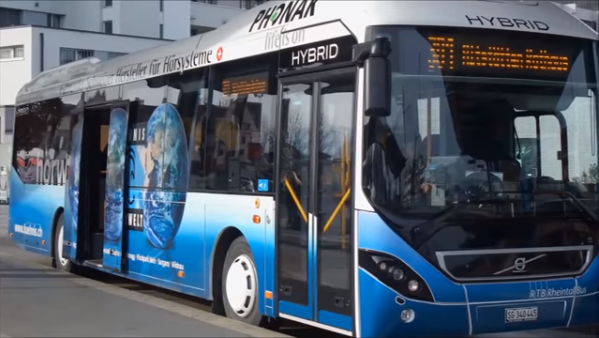A city politician is lamenting London’s decision to put the north corridor of bus rapid transit on Richmond Street instead of Wharncliffe Road.

Ward 6 Coun. Phil Squire made the comment during Tuesday’s civic works committee meeting that dealt with a $60-million road widening project for Wharncliffe and will result in London either demolishing or moving a 121-year-old heritage home.
“I just want to point out for the engineers that we now have a route, after this project is done, with no rail impediments that in my view would have been a wonderful BRT route. On Richmond there is a rail impediment,” he said.
The comment harkens back to last spring’s discussion over the north corridor for BRT. London city council considered four options, one for Wharncliffe and Western Road and three on Richmond. The three on Richmond included a tunnel, an underpass and the at-grade option that was ultimately chosen.
Squire, who represents ward 6 which includes Richmond Street and Old North, argued in favour of the Wharncliffe/Western Road option, but council chose to go with the recommendation from city staff to use Richmond instead. Staff recommended Richmond as it had better growth opportunities and would have impacted less property.
Squire believes council lacked the will to consider other options.
“I think the objections could have all been overcome and dealt with if there was a real will to have looked at something different but it just didn’t happen and I’m sorry about that because in terms of better development it was the better choice,” he said.

Get daily National news
Critics have charged the rail line that runs through downtown London on Richmond south of Oxford will negatively impact travel times.
Squire says the Wharncliffe Road alternative would have still let the BRT route run along the border of Western University, which the university wanted and would have saved the cost widening Richmond Street.
London city hall is still working out a deal with Western to have rapid transit run through campus. The university submitted a list of demands last year including bus rapid transit never being upgraded to light rail, the city taking on all road maintenance and snow removal costs, widening Philip Aziz Drive and improving or replacing University Bridge.
City council is currently considering whether to expand Richmond north of Oxford to four or six lanes, both of which will result in Londoners losing some property or their home entirely.
Despite questioning the decision over the BRT route, Squire praised the road widening project on Wharncliffe.
“It’s going to be important in the particular area,” he said. “It’s going to become even more important as we enter into bus rapid transit because we’re going to see that there’s going to be more vehicular road on Western Road and Wharncliffe.”
The city will spend $38.9 million to widen Wharncliffe from Becher Street to Springbank Drive, $13 million to reconstruct the rail bridge near the Oxford Street intersection and $8 million on improvements on Western Road to Wharncliffe North.
The battle to save a 121-year-old heritage home at 100 Stanley Street could be an indication of what’s to come when the city expands Richmond Street. The road widening on Wharncliffe will result in the heritage home either being demolished or moved to another location.
75-year-old Nan Finlayson has argued passionately to keep her home where it is, but city staff say the project can’t move forward with her home where it is. Staff have offered to move her home to a location nearby, an option Finlayson isn’t fond of. Finlayson told 980 CFPL on Wednesday she will consider her legal options if city council votes in favour of the road widening project next week.
The road widening is part of London’s 2030 Transportation Master Plan.
Squire referenced the future battles city council could face when he shared a conversation he recently had with a constituent who lives on Richmond Street. The man told Squire he knows he will lose his house on Richmond that has been in the family for generations and implored with Squire to get him the “best deal” he could.
London’s $500-million bus rapid transit plan has yet to receive full funding. London has pledged $130 million through development charges, and last month learned the province would provide $170-million. The federal government is being asked to cover the remaining $200-milllion but has yet to confirm that will happen.
The 24-kilometre BRT network will see the high-frequency buses run along L and 7 shaped corridors inside the city. Buses will run from Oxford and Wonderland Road in the west, to White Oaks Mall in the south and from Masonville Place in the north to Fanshawe College in the east, with both corridors running through the downtown.








Comments